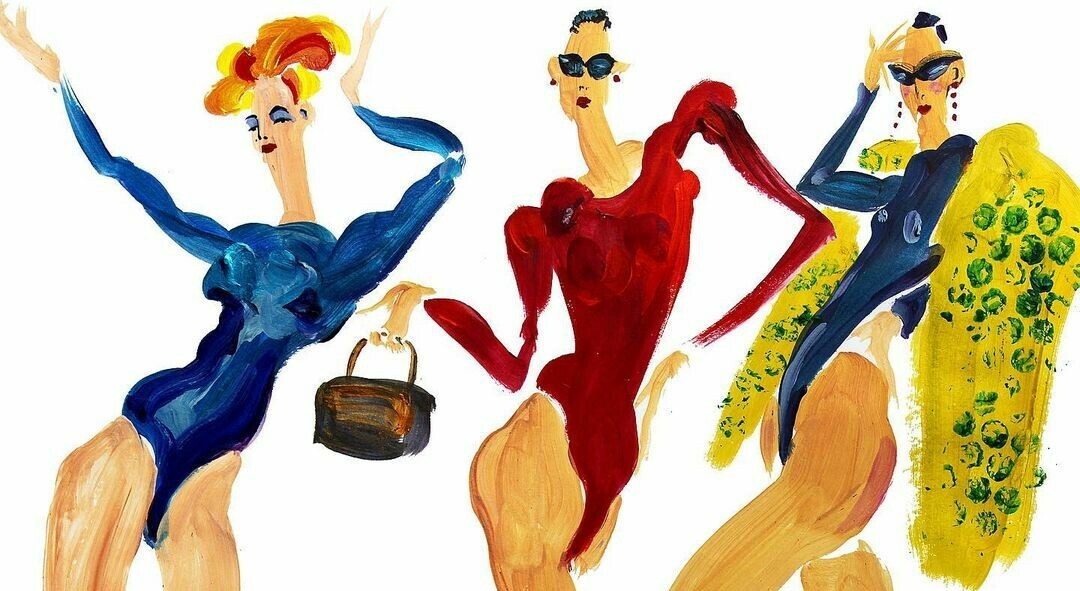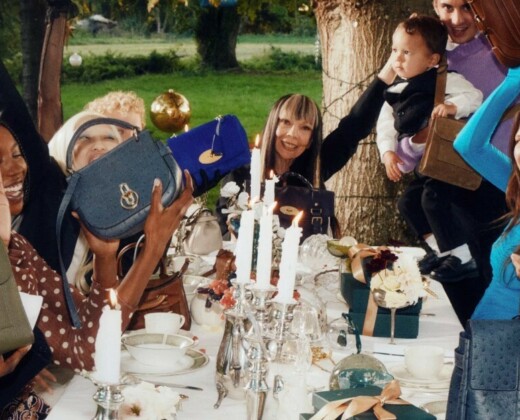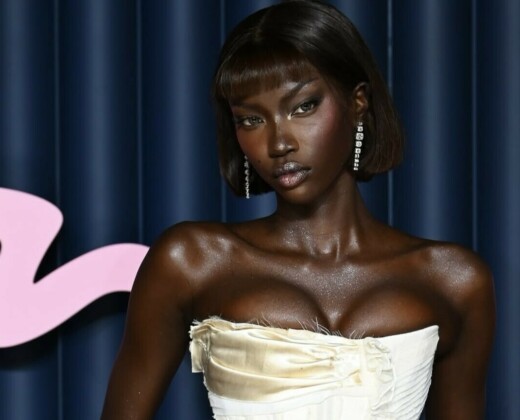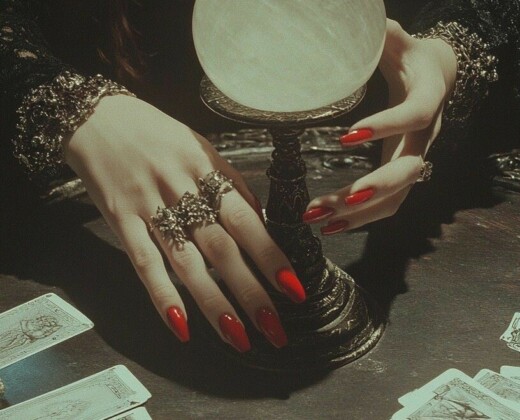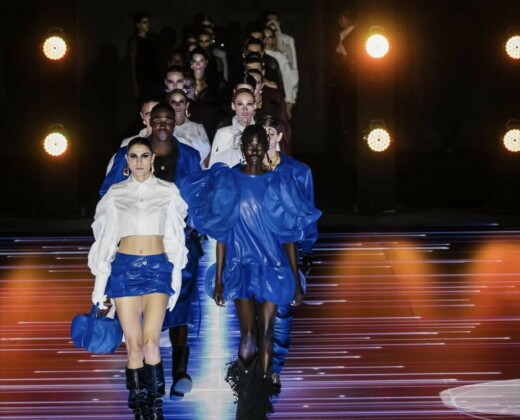Sue Dray has been working in the artistic realm for over 40 years now, starting out as an illustrator and then refining her work in the fashion realm, while exploring the publishing and advertising world and sharing her knowledge as a lecturer and course leader at the London College of Fashion.
“I’ve been in the industry for so long,” says Sue Dray, yet her passion for her work remains fresh and current, noticeable through her work ethos and approach to the arts.
The artistic realm is often described as an interconnected world, where different arts, industries, and professions connect or even interchange, but it is not always easy to find a balance between them… However, the British fashion illustrator has managed to do so, combining her interest in human interpretation and conveyance through both illustration and fashion – as done through her live drawing work at London fashion week.
We had the opportunity to talk to Sue Dray and find out more about her perception of the arts, work throughout the years and plans for the future.
How did you first discover your passion for illustration? And how did you enter the industry of fashion illustration?
“I’ve always liked drawing people and I’ve always been into fashion, even if I didn’t remain in fashion when studying at the London College of fashion – I came out as an illustrator.
But it was only really years later, in 2009, when I was asked to go into London College of fashion as a lecturer… I remember looking at my profile and thinking, gosh, here I am teaching the next generation of fashion illustrators and I, I really haven’t got a profile that I am a fashion Illustrator. So, I reinvented myself as a fashion Illustrator around 2011.
I went out and started drawing at London Fashion Week and building up a niche for myself as a fashion Illustrator… I went, okay, I can do it. I’m going to put myself through the same course I’m teaching and I’m going to become a fashion illustrator, per se, that’s kind of how it happened.
I’ve always loved clothes. I’ve always loved designing, making, and wearing my own clothes. I’ve always liked developing my own style and my own niche, so it felt natural for me to move into fashion illustration because of my love for clothes.”
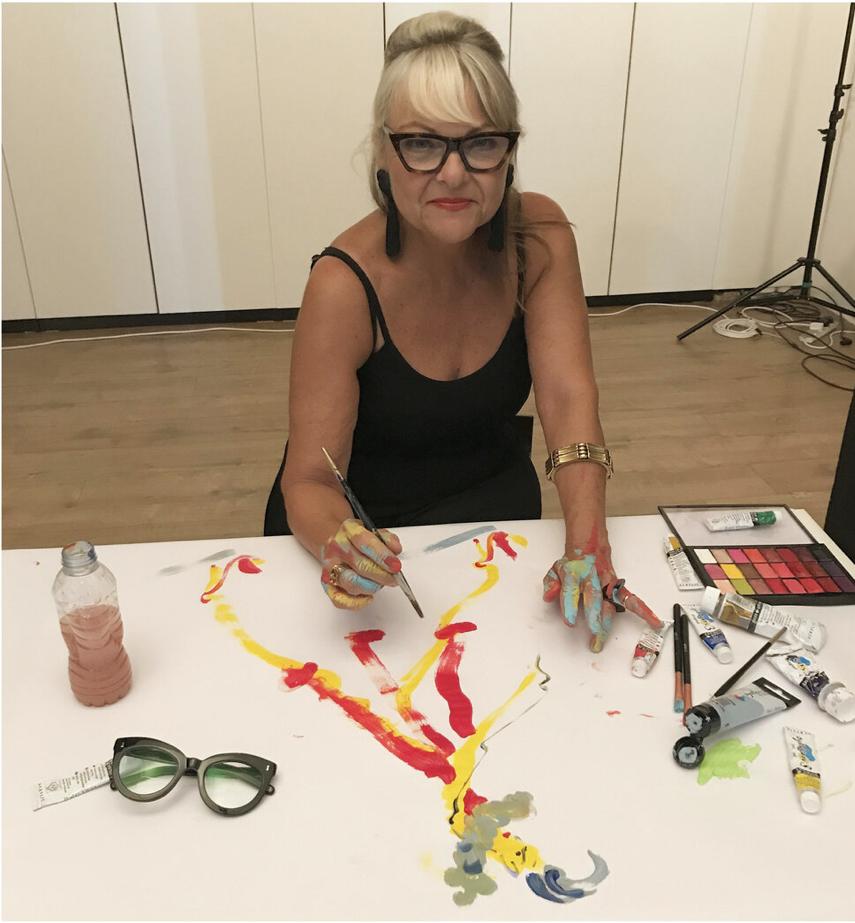
How do you manage to express your love for clothes and the beauty of fashion through illustration?
“My work is almost the opposite of what fashion is meant to represent for women. Therefore for me, the people came first. I was very lucky, some of my first commissions were to draw from the catwalk, for people like Pam Hogg, and, and Vivienne Westwood. All their models were very unique, so it was very much about marrying the bizarre nature of the clothes too.
But when I was drawing, it was always drawing from live events. And it was always about drawing really, quickly, so I didn’t have the time to focus on every single detail, and it was just about capturing the essence of that collection, the silhouettes, of the colourway or the textures or the fabric. So, my drawings became more conceptual, it was more an impression of what I saw in that collection. So, they become quite personal to me, which is why I say that I’m a fashion artist, not a hardcore illustrator.”
What is your perception of the current fashion industry? Is it directed towards a positive change? And is this present in your illustrations?
“I think that obviously yes, we’re all becoming aware of all the issues that are out there. We are becoming aware of the importance of the representation of all the different types of people, cultures, and genders and, you know, worse and the fashion industry obviously, is, is super sensitive to that. And the fashion industry is starting to reflect it.
I’m being represented in the world of fashion; I can actually see people who are a bit similar to myself. So, I think the fashion industry is doing their best, and they have to because we are the communicators to younger generations. There is a big responsibility to engage in that.”
Out of all the artists, brands, and publications you have collaborated with or worked for, which one would you say was the most rewarding one? And why?
“I think that what was most thrilling for me, obviously, was being backstage at Vivienne Westwood drawing. That was like tingling because I’ve always admired Vivienne Westwood. I used to pass her shop back in the 80s in Kings Road and I used to be so intimidated by going in because I wasn’t punk. But her clothes are beautiful yet so brave. When you wear them, you know that you’re wearing something important and it gives you so much power and confidence, just like her shows.
But I think that the other most humbling experience I’ve ever had, and one of the most memorable, was working for Karen Millen. I went out to South Africa, Pietermaritzburg, and I worked to set up a school there for young people who have been affected by HIV – in collaboration with hope HIV. We set up a school to teach a selected hand full of young people fashion skills. The school was giving them skills to be able to make clothes and now some students are getting scholarships to go off to Johannesburg into the art college. Those kids were like nobody else I had ever taught.”
How do you manage to keep a balance between the different areas of your job? Alternating between commissions, live events and teaching?
“I don’t know, really. I’m a bit of a workaholic, I can’t sit still. Even when I’m watching television, I can’t sit there and watch television it will drive me crazy. So you know, I constantly have to be doing something. I like to be kept busy. And I like to be inspired. And so for me, my downtime is actually doing things. When I was a solid illustrator and I wasn’t teaching at all, back in the 80s after 10 solid years of illustrating, if I didn’t have any commissions in and there was no work coming in, which actually wasn’t very often but it sometimes happened, I would think, right, I have to do my own work and I’m going to start getting work together for an exhibition. So I just sort of set myself goals, I decide what I want to do and I make a list of all the things that I want to achieve and then I set the time to time tick them off.
So it’s mostly by reaching deadlines, setting yourself agendas, making myself lists, and really disciplining myself to be in that particular space at that particular time. That’s how I do it, I don’t have any golden tips. I think it’s just passion, and it’s the passion for what I do and wanting to do the best I possibly can.”
What advice would you give to young creators, graphic illustrators, especially to creatives that are trying to get their work out there?
“ You’ve got to find out who is the art director or art buyer of all the publications you would like to be featured in is and make direct contact with them. Also, Instagram has to be professional. Try not to put anything else on there. I mean yes, you can put your pictures on there if you’re out somewhere fabulous and look great, but it has to present yourself as professional or have a separate Instagram and Facebook for your professional work. And constantly keep working at your craft, whatever that is, let’s say that you’re a fashion illustrator, you’re constantly drawing, you’re constantly keeping up with the trends, with the designers and what they’re doing, with their collections, keep yourself really current.
I think you’ve got to stay active and keep in mind that networking is great. You also want to know who’s out there and who’s doing what and make connections with them. Because it is a little bit of that as well. A lot of making connections and keeping the connections alive and be genuine. Be yourself. Be genuine. Be honest. I think that’s what has worked for me.”
Words By Chiara Ferrari
Photo Credit: Sue Dray Instagram


